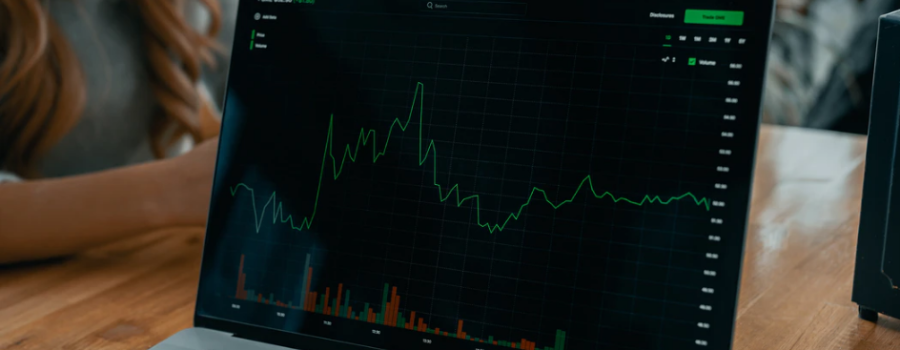Our latest monthly investment update for June 2021 looks at how the global investment markets, economy, and commodities perform.
The FTSE 100 index of leading UK company shares closed at the end of May at 7,022.61 points, up 52.8 points or 0.76% during the month.
European stock markets opened strongly at the start of June, following the Bank Holiday weekend, with investors buoyed by positive manufacturing data across Europe. Investors seemed unfazed by the warning that the UK could be in the early stages of a third wave of the Covid-19 pandemic.
According to Professor Ravi Gupta from the University of Cambridge, despite low Covid-19 case numbers in the UK, the new Indian variant is fueling ‘exponential growth’ in infections. Speaking to BBC Radio 4, Professor Gupta warned: “Of course the numbers of cases are relatively low at the moment – all waves start with low numbers of cases that grumble in the background and then become explosive, so the key here is that what we are seeing here is the signs of an early wave.”
The latest data for the manufacturing sector show it continued its recovery in May. The IHS Markit Purchasing Managers’ Index recorded 65.6, with a figure above 50 indicating expansion. The May figure was a new record high.
Output growth in the manufacturing sector continued to strengthen, and new orders were recorded at their fastest pace in the 30-year history of the survey. It’s the twelfth consecutive month of improvement for the PMI.
Rob Dobson, director at IHS Markit, said: “The corollaries of this strong upsurge in industrial activity are increased strain on supply chains and a build-up of price pressures. Supplies of inputs into manufacturers and finished goods on to clients are both being severely disrupted by raw material shortages, port issues, COVID restrictions, post-Brexit difficulties and market forces as demand outstrips supply.”
The Organisation for Economic Cooperation and Development (OECD) is now forecasting the UK economy will grow by 7.1% this year. The latest OECD forecasts are up from its projection of 5.1% growth in 2021 back in March. If this level of growth materialises in the UK, it will be the best among the wealthiest OECD countries.
The OECD also raised its forecasts for global economic growth this year, from 4.2% to 5.8%, while warning that growth is likely to be unequally shared. While global economic prospects look brighter as activity returns to its pre-pandemic levels, expectations remain below those originally expected by the end of next year.
UK house prices continue to surge higher, with the latest Nationwide survey reporting annual price growth of 10.9% in the year to May. This is the fastest rate of annual house price growth in seven years, with the average price of a home rising by £23,930 in a year to reach £242,832.
According to Nationwide, homebuyers are now in a “race for space” as they look for larger properties and gardens. While an extension to the stamp duty holiday had previously been the driving force behind house price growth, the critical factor now seems to be changing property preferences.
Robert Gardner, Nationwide’s chief economist, said: “The market has seen a complete turnaround over the past twelve months. But activity surged towards the end of last year and into 2021, reaching a record high of 183,000 in March. It is shifting housing preferences which is continuing to drive activity, with people reassessing their needs in the wake of the pandemic.”
Pound Sterling reached a three-year high against the US Dollar at the start of June, pushed higher by economic recovery expectations and a continued successful vaccination programme. Sterling reached $1.4250, its highest level since April 2018. Optimism around Pound Sterling was also supported by continued house price growth.
Further support for Pound Sterling came at the end of May, when Bank of England policymaker Gertjan Vlieghe hinted at a possible interest rate rise later in 2022 or earlier if economic recovery happened faster than expected. Sterling is one of the best-performing G10 currencies relative to the US dollar this year, up by almost 4% in the past year.
The benchmark Brent oil price exceeded $70 a barrel following an OPEC+ announcement on global production. An earlier glut of oil accumulated during the pandemic has almost disappeared, and stockpiles are expected to decline significantly in the second half of the year.
OPEC+ has confidence that a robust economic recovery in the US and Europe will allow the absorption of additional barrels, despite a resurgence of Covid-19 in Asia, including India. OPEC’s Joint Technical Committee is forecasting their stockpiles will be reduced by at least 2 million barrels a day between September and December 2021.
Continued talk of a minimum global effective corporate tax rate could raise an additional 50 billion euros each year for the European Union. The OECD modelled the tax forecast based on an effective rate of 15%. In a report for the EU Tax Observatory for European Institutions, tax revenue was calculated at 170 billion euros if a tax rate of 25% was introduced.
A final minimum tax rate will depend on a deal agreed between the US and OECD countries, including an agreement on where multinational companies are taxed and whether all tax revenue is taxed in their home country or where the revenue is generated. The deal is expected at a meeting of G20 finance ministers next month.
The benchmark 10-year government bond (gilt) yield slipped back slightly during May, reaching 0.81% at the start of June and remaining very low by historical standards.

